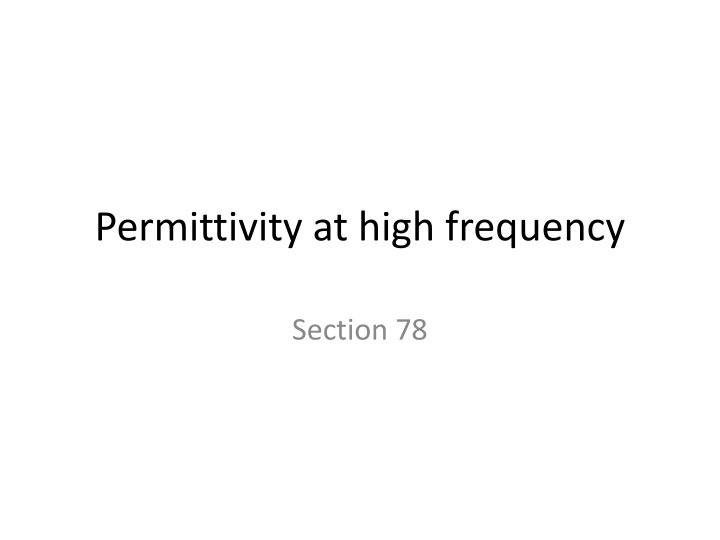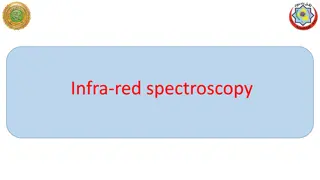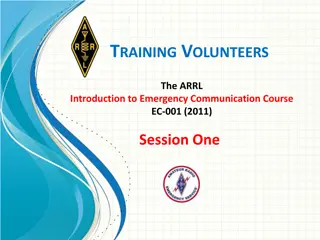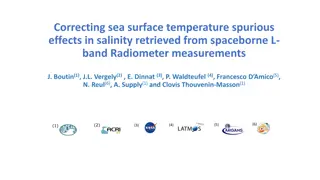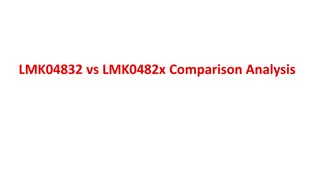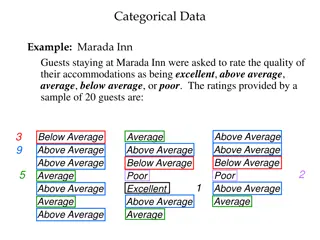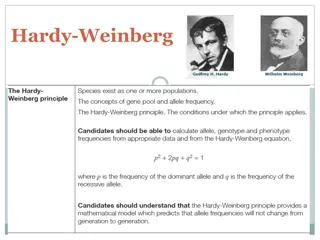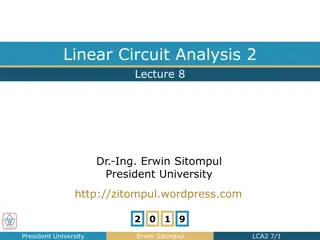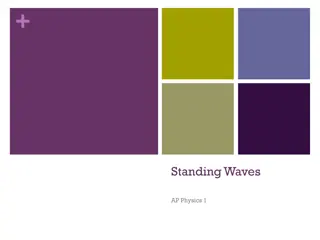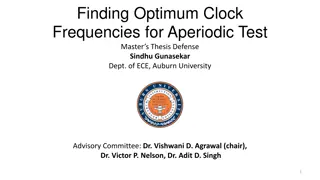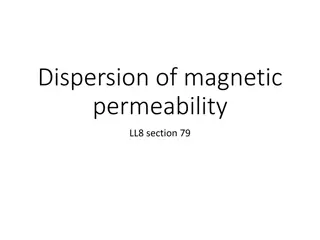Permittivity at High Frequencies
Exploring the behavior of permittivity at very high frequencies, where polarization processes cannot keep up with driving forces, leading to unity relationship between electric displacement and electric field. Discover how electron interactions impact conductivity in uniform fields and the distinction between conductors and dielectrics.
Download Presentation

Please find below an Image/Link to download the presentation.
The content on the website is provided AS IS for your information and personal use only. It may not be sold, licensed, or shared on other websites without obtaining consent from the author.If you encounter any issues during the download, it is possible that the publisher has removed the file from their server.
You are allowed to download the files provided on this website for personal or commercial use, subject to the condition that they are used lawfully. All files are the property of their respective owners.
The content on the website is provided AS IS for your information and personal use only. It may not be sold, licensed, or shared on other websites without obtaining consent from the author.
E N D
Presentation Transcript
Permittivity at high frequency Section 78
1. At very high frequency, () tends to unity Because polarization processes cannot keep up with high frequency driving forces. Then P => 0, and D = E + 4 P => E
2. What function of frequency shows how () approaches unity? If the driving frequency exceeds the frequencies of motion for all electrons, we can neglect electron interactions with each other and with nuclei. Then all electrons are regarded as free. Then, there is no difference between conductors and dielectrics.
3. To find the velocity acquired by an electron in a high frequency field, treat the field as being spatially uniform. Usually, electron velocities are non-relativistic, v << c. Then the distance traveled during one EM-wave cycle is Then, each electron is accelerated in a uniform field v = the additional velocity acquired from the field
4. Equation of motion Electron s displacement caused by the field
Polarization = dipole moment per unit volume P(r,t) = N = number of electrons in all the atoms per unit volume
Valid for very high frequencies: Far UV for light elements X-ray for heavy elements Define the plasma frequency Then
Real Negative for < p (metallic behavior) Positive for > p (dielectric behavior)
Which curve is a possible permittivity in the limit of high frequencies?
